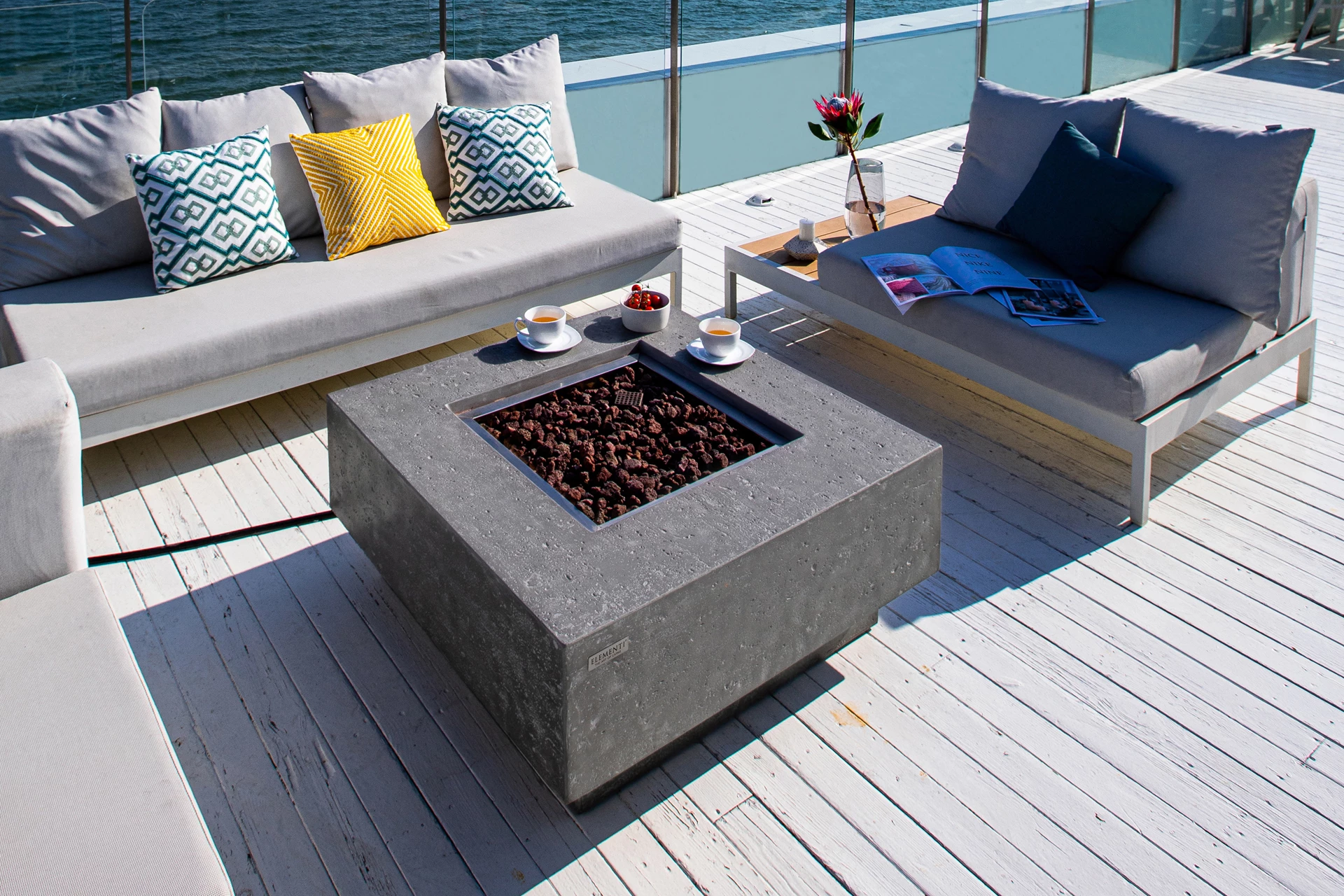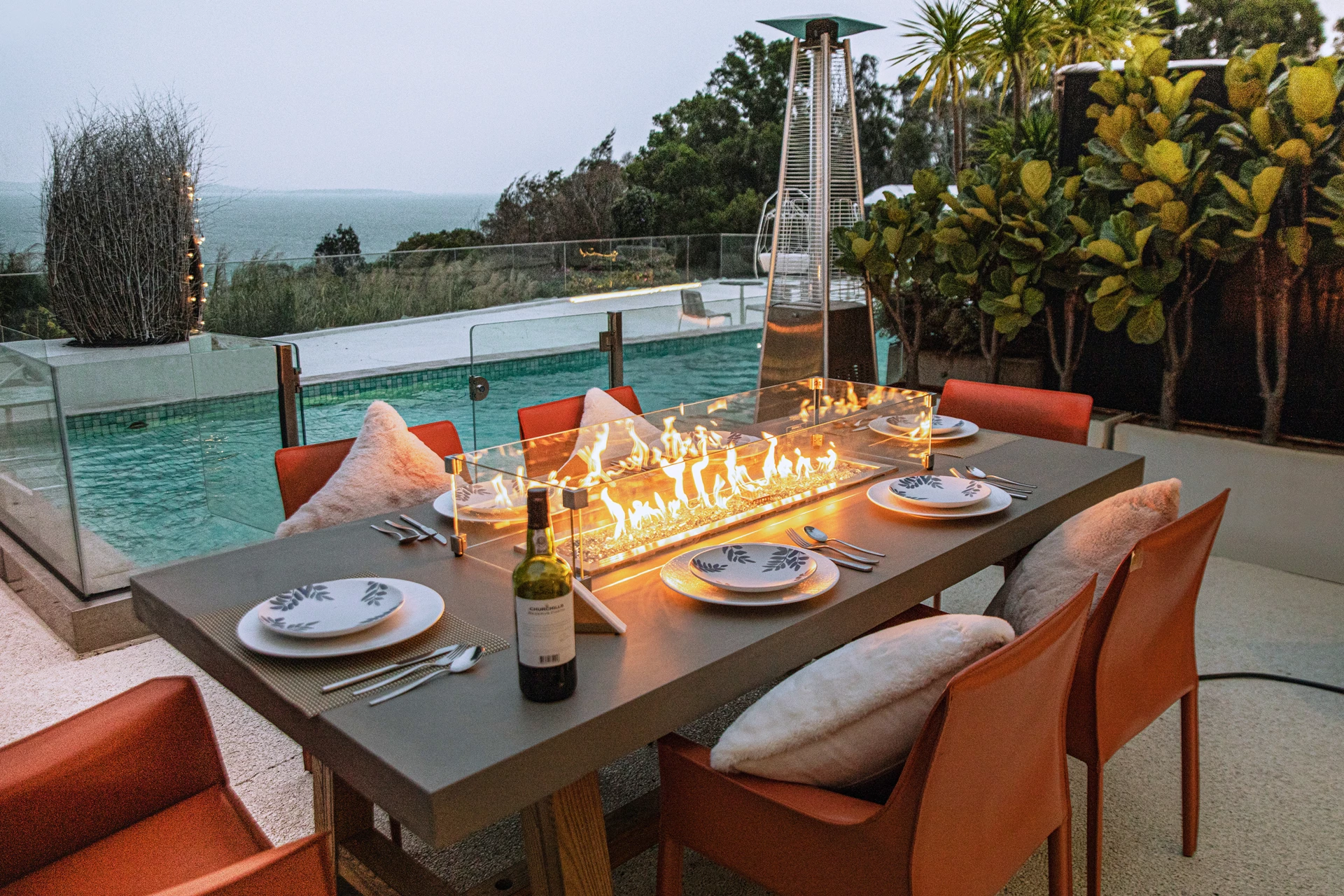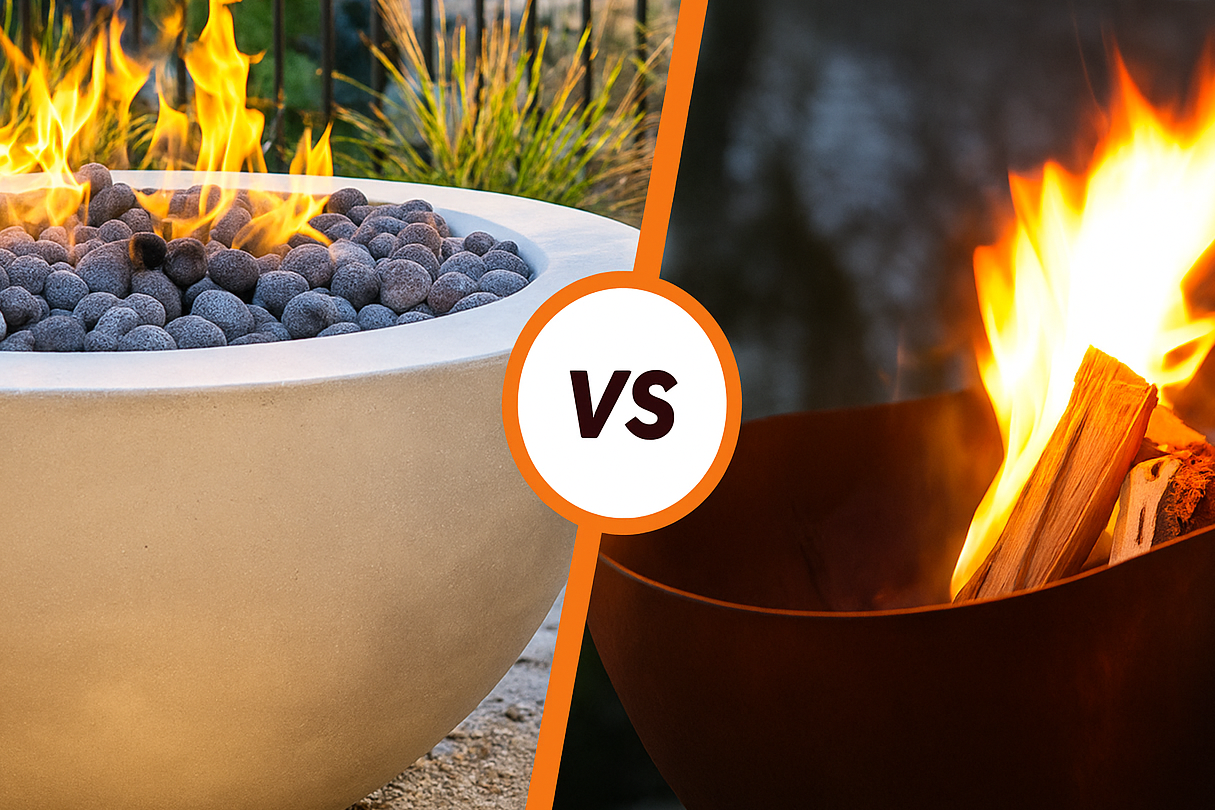Are you wavering between a gas fire pit and a wood fire pit for your outdoor area? You are not alone. Fire pits are extremely popular in European gardens, patios and courtyards – but choosing the right system depends on space, usage, budget and local rules. This guide compares both options from a European perspective to help you make an informed decision.
1 Quick conclusion
Gas fireplaces are cleaner, more convenient and require less maintenance, but have higher initial costs. Wood fireplaces offer the traditional campfire feeling, high peak heat and versatile cooking options – but require more manual work, maintenance and consideration for neighbors (smoke/sparks).
2 Basic differences: gas vs. wood
Fuel: Gas fireplaces use propane/butane (in Europe often 30 mbar or 50 mbar regulator) or natural gas; wood-burning fireplaces are traditionally operated with logs.
Operation: Gas is ignited and regulated via rotary knob/starter – intuitive and reproducible. Wood requires lighting, re-lighting and fire control – atmospheric, but more complex.
Look & style: Wood looks rustic and original (including crackling/scent), gas modern and clear – with an even flame pattern that blends elegantly into contemporary garden design.
3 Important selection criteria before purchase
Space & location: Natural gas requires a fixed line (fixed position), propane/butane requires a secure cylinder storage location. Wood is flexible in terms of location, but requires good ventilation and distance from neighbors (smoke).
Purpose: Do you want maximum heat or cooking over an open fire (e.g. marshmallows, barbecues)? Wood scores points. When it comes to convenience, cleanliness and spontaneous use – especially in semi-public/commercial areas – gas has the advantage.
Budget: Wood fireplaces are roughly €300-1,000, gas fireplaces often €800-3,000+. Ongoing costs depend on wood and gas prices and service life.
Rules & regulations: Check local regulations, fire safety, house rules/condominium rules: In some places, there are restrictions on fuels, distances, times and smoke development – especially in densely built-up areas and on balconies.

4 Gas fireplaces: Advantages & disadvantages
Advantages: Very convenient (rotary knob/starter), quickly ready for use, no smoke/ash, hardly any cleaning required, even flame, good neighborhood compatibility. Strong design (e.g. as a fire table) and easy to integrate.
Disadvantages: Higher initial investment; natural gas requires specialist installation (pipe/acceptance), cylinder operation requires safe installation/replacement. Cooking is possible, but usually more limited than on a wood fire.
5 Wood fireplaces: Advantages & disadvantages
Advantages: Authentic campfire with crackling and fragrance, very high peak heat output, versatile for cooking over an open flame, strong experience quality.
Disadvantages: Lighting/keeping the fire requires practice and attention; ashes/ embers must be disposed of. Smoke/flying sparks can be disturbing and dangerous – pay attention to wind/dryness.
6 Aesthetics & individualization
Material & design: Gas and wood models are available in stone, metal and Beton. High-quality gas fireplaces often rely on GFRC (glass fiber reinforced concrete) for durability and a high-quality feel; wood models are often available in Corten steel, stainless steel or cast iron – from minimalist to rustic.
Mobile vs. built-in: Both types of burner are available as portable individual units or as built-in solutions. If you want flush integration into the patio design, plan dimensions, clearances and ventilation at an early stage (especially with natural gas).
7 Installation, maintenance & service life
Installation: Wood can be used immediately (observe fire protection). Bottled gas is relatively simple; natural gas requires professional installation (regulator, pipes, leak test).
Maintenance: Wood: regular ash removal, check rust/shell. Gas: Check connections for leaks, condition of hose, regulator and burner; weather protection cover extends service life.
Durability: Dependent on material/processing. GFRC, stainless steel and weather-resistant steels perform particularly well in the European climate.
8 Environment & Sustainability
Emissions: Wood produces smoke and particulate matter – regulated in some cities/locations. Gas burns more cleanly and with less odor, but is not a renewable energy source (in the case of natural gas).
Sustainable options: If possible, use dry, untreated wood from sustainable forestry. With gas, ensure efficient operation (appropriate flame height, wind protection/glass top).
9 Costs, value retention & resale
Investment: Wood scores with a low entry threshold. Gas costs more, especially as a built-in solution with a natural gas pipe. Professionally integrated gas fireplaces are often perceived as a high-quality feature and can enhance the external appearance of the property.
Long-term: Wood causes costs for storage/transport/cleaning; gas reduces maintenance time, operating costs depend on energy prices and use.
10 Heat output (BTU/kW) – what does this mean?
The actual heat output is a key criterion. The unit BTU (British thermal unit) is often used in specifications. If you are not sure what BTU means, we recommend our guide: “Fireplace BTU guide”. And if you don’t know how many BTU makes sense for your area – or how this affects gas consumption – feel free to use our BTU calculator.
11 Conclusion & decision support
For clean, reproducible operation and strong design, gas is usually the best choice – especially as part of a modern garden concept. For maximum campfire atmosphere, cooking over flame and peak heat, wood is unbeatable – provided the location and neighborhood allow for smoke/sparks. Check the space, usage, rules, environmental aspects and budget – then make a decision that suits your lifestyle.

12 Frequently asked questions
Which is “better” – gas or wood? Depends on priorities: Wood for ritual/cooking/peak heat, gas for comfort/cleanliness/design integration – especially in close neighborhoods.
Disadvantages of gas? Higher initial costs, possible pipe installation (natural gas), regular safety checks for hoses/regulators/connections.
Does gas heat sufficiently? Yes. Good quality gas fireplaces deliver high output (tens of thousands of BTU) for typical patio settings; in very cold conditions, wood has higher peak output.
Is a gas fireplace worth it? If low maintenance, immediate use and architectural integration are important – yes. Those who prefer cost focus and campfire ritual will be happy with wood.










